Permaculture Food Forest:
Why and How to Create One
Ever heard of a permaculture food forest? It's a system of food production that utilizes the wisdom inherent in natural woodlands and the understanding of beneficial relationships between plants to create and support landscapes that grow food for human use. This method is also called a forest garden, edible forest garden, and gardens of complete design. In parts of the tropics, food forests have been used for over 1,000 years.
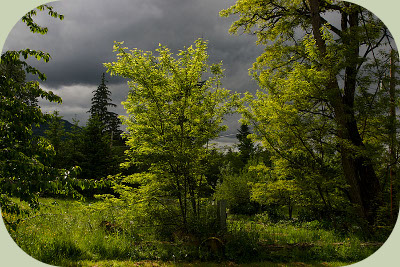
How does it work?
Permaculture food forests rely heavily on "polyculture" versus monoculture production. Polycultures can be understood as dynamic, self-organizing plant communities composed of several or many species. In this approach plants are grown in groups known as "guilds" which support each other through various different functions. Guilds are a harmoniously interwoven group of plants and animals that are of benefit to humans while also creating habitat for other organisms.
It helps to take a look at the concept of a food forest by looking at what kinds of relationships can exist around a single tree. For instance, below an apple tree you could plant white and red clover to help fix nitrogen, comfrey to act as a dynamic accumulator which brings up nutrients from deeper down and makes them available to the other plants, tulips, chives and daffodils to attract beneficial insects and repel unwanted pests and suppress grass at the tree's base. All work in harmony to benefit each other, and the apple tree.
Although not all plants are directly edible by humans, they all function together to bring in the larger cycles of nature to create a healthier permaculture food forest landscape.
Why make one?
The benefits of creating a permaculture food forest are many! The most obvious one might be that if properly planned out, a permaculture food forest practically runs and maintains itself. It creates a habitat for local wildlife, pest control, pollination and wildlife viewing opportunities. Since permaculture food forests do not require chemical fertilizers or pesticides, they produce much healthier foods and products. These benefits might include products such as fibers, fuels, green manure, materials for crafts, food for domestic animals and can help reduce water usage in the garden.
How you garden is a reflection of your world view. This more harmonious approach to nourishing people also provides nourishment for the earth. It allows you to achieve a means of more independence from the more destructive modern agricultural methods, while at the same time providing you with a more direct relationship to and deeper understanding of the interdependence that is required to support all life.
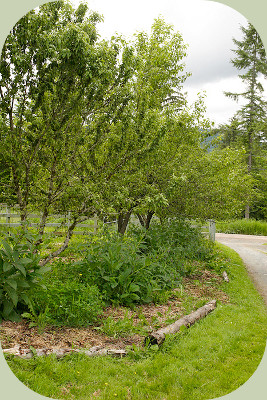
What is in a Permaculture Food Forest?
Though every food forest is different, there are certain parts and patterns that are found within all of them. These are based on observations of relationships found within natural woodland and forest systems. For starters, most woodland habitats have some of the following structures that function at different levels: a canopy formed by large trees, a small tree to large shrub layer, a small shrub layer, an herbaceous layer, a layer of very low-growing ground cover plants and often some kind of vertically climbing plants. These plants not only grow at different levels above ground, but also have roots that reach different depths and therefore, not only minimize competition but help nourish each other.
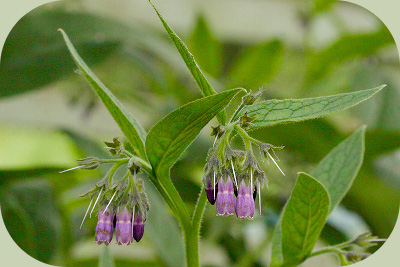
There are many potential plant combinations that could be used to create a food forest. Please read on for some possibilities.
For the canopy you could grow fruit bearing trees such as apples, pears, peaches or nut producers such as pecans, walnuts, almonds. Between these you could grow dwarf or small fruit tree varieties of plums, nectarines, apples, and cherries. Then between those you could put in shrubs such as beaked hazel, Saskatoon serviceberry, blackberry, raspberry, currants and gooseberries. Underneath the large and dwarf trees you can put some herbaceous plants such as comfrey, daffodils, tulips, hyacinth, yarrow and chicory. For ground cover you could grow red and white clovers, yerba buena, and strawberries. As for climbing plants you could grow peas, beans and others up the trunks of the trees.
Be More Prepared For Your Next Outdoor Adventure!

Don't leave without knowing these six essential survival skills. Our free survival mini guide reveals the strategies of:
- Shelter & fire to prevent the number one cause of death
- Obtaining clean water to avoid life-threatening dehydration
- Common wild survival foods and other critical skills!

Positioning bulbs such as garlic, chives, daffodils, camas and hyacinth around the base of the tree to suppress grass and repel potential pests. Yarrow, chicory, comfrey, plantain are all great dynamic accumulators to help the growth of the plants and trees around them. Clovers, peas, beans, lupines and other members of the legume family are great nitrogen fixers, making nitrogen from the air and soil accessible to the surrounding trees and plants. Plants such as artichokes, comfrey and burdock are great mulch plants and all 3 also happen to have edible parts. You should consider also bringing in nitrogen fixing shrubs such as sea buckthorn, goumi and autumn olive, which all also produce edible fruits.
Where do I start?
It can help you to begin by observing what you have at the location you wish to create a food forest. Ask yourself:
- What is already here?
- What kind of soil do I have? What is the pH?
- What kind of trees and plants would I like to have in my permaculture food forest?
- Where does the sun fall at different times of the day and during different seasons?
- Where would I want things to go?
- Are there wetter and shadier areas of the location? What might grow better there?
- Are there sunnier and drier areas of the location? What might grow better there?
- If you plant a tall tree here, will it shade-out other plants that needs a lot of sun?
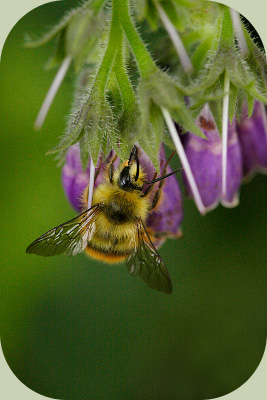
Drawing up a map of the location can be tremendously helpful prior to doing any of the work. Look carefully into what species of trees, shrubs and herbs do well in your region. Pick ones that can handle the rigors and stresses of that region. This will save both you and the plants undue stress and hardship.
Growing a permaculture food forest is a process full of learning opportunities. The most common is related to plant spacing, and often, the most common mistake is to plant too close together. Some of this can be worked out prior to planting by planning out a design on paper. It is generally easiest to start with the largest elements first. Draw out the largest trees on paper as circles and space them according to their growth needs. Different kinds of trees have different requirements of space. Start with how big the crown of the tree is likely to get according to its growth habit, than add at least several feet of space on all sides of the crown.
Plan out similar considerations for the needs of all the plants you wish to put into your food forest. Remember to leave room for growth. If one thing does not work, try something else. This is meant to be a learning process, so have fun with it!
By the way, a big part of why we love homesteading & permaculture skills so much is because they are a natural extension of learning about wilderness survival (both fields are all about self-sufficiency and working with nature to satisfy needs). An understanding of survival not only helps you become a better permaculturist, it empowers you with life-saving outdoor skills to keep you safe when out in nature. Right now you can get a free copy of our mini survival guide here, where you'll discover six key strategies for outdoor emergencies, plus often-overlooked survival tips.
Additional Resources:
Seattle's Urban Permaculture Food Forest
Related Courses:
For further training in permaculture, check out our Permaculture Courses.
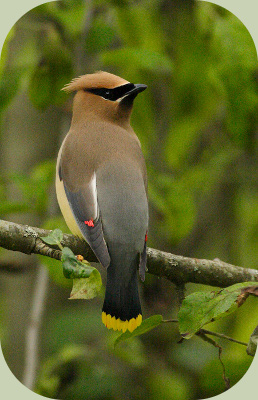

About the Author: Filip Tkaczyk is a periodic guest teacher at Alderleaf. He also wrote the field guide Tracks & Sign of Reptiles & Amphibians. Learn more about Filip Tkaczyk.
Return from Permaculture Food Forest back to Permaculture Articles
Is The Essential Wilderness Survival Skills Course Right for You? Take the "Online Survival Training Readiness" Quiz
See for yourself if this eye-opening course is a good fit for you. It takes just a few minutes! Get your Survival Training Readiness Score Now!

Grow Your Outdoor Skills! Get monthly updates on new wilderness skills, upcoming courses, and special opportunities. Join the free Alderleaf eNews and as a welcome gift you'll get a copy of our Mini Survival Guide.

 The Six Keys to Survival: Get a free copy of our survival mini-guide and monthly tips!
The Six Keys to Survival: Get a free copy of our survival mini-guide and monthly tips!
Learn more